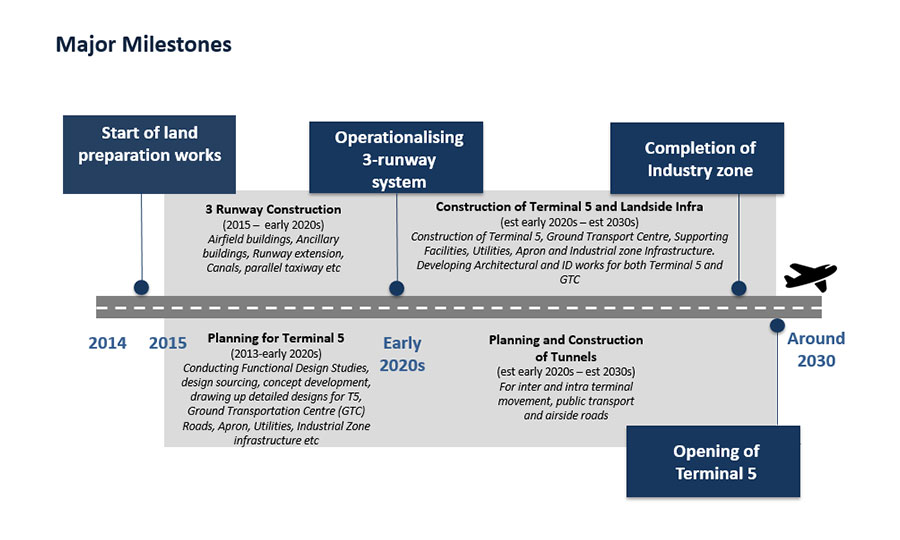For the past seven years, Singapore’s Changi Airport is named the world’s best airport. It already boasts some of the best amenities and services an airport can have but it outdoes itself again by opening its new crowning structure, Jewel Changi. Jewel Changi contains many attractions including the world’s highest indoor waterfall making Changi Airport more than just an airport but a destination in its own right.
If this isn’t enough, Singapore now sets its eyes on its biggest project yet – Changi Terminal 5. It is designed to be as large as the existing airport, all the four terminals combined. Yes, you heard that right.
How is it going to work?
The Terminal 5 project, expected to be completed by 2030, will be financially fueled by the Changi Airport Group (CAG) and the Government of Singapore. CAG also contracted several companies to execute the plans laid down:
- Architectural design: Heatherwick Studio, KPF (Singapore), Architects 61
- Engineering and Consultancy Services: Surbana Jurong Consultants, Arup Singapore and Mott MacDonald Singapore
- Design of Commercial Spaces: DP Architects is responsible for the design of commercial spaces in the T5.
- Programme Management and Civil Consultancy Services: Changi Airport Planners and Engineers (CAPE) along with Arup, Mott MacDonald, and Surbana Jurong.
- Design consultants: Speirs + Major, James Corner Field Operations, Lichtvision Design, The Fountain Workshop, Bruce Mau Design and Entro.
- Land preparation work: Penta-Ocean / Koon joint venture.
Here are Changi Airport’s target milestones for the project:
What should we be excited about?
The project features a massive terminal surrounded by supporting aviation facilities. On top of this, an 18-km network of tunnels connecting it to the other four terminals which would facilitate baggage transport. Lastly, the project also boasts a three-runway system. This is a more urgent project than the terminal building since the existing two terminals are soon to reach full capacity. The runway is expected to attain completion by 2020.
But why?
The number of people using the airport is steadily increasing, as Changi Aiport’s traffic statistics indicate. On 2018, they recorded 65.6 million people passing through the airport, up from 2017’s 62.22 million. Approximately every 80 seconds, one flight either arrives or departs from Changi Airport.
This figure is only expected to increase. While this is far from the airport’s 85 million capacity, Singapore wants to be prepared. Changi Terminal 5 will expand the airport’s capacity to a staggering 135 million, which according to them should suffice for a few decades. The increased capacity also equates to improved efficiency. This, however, is nothing less from the world’s best.










